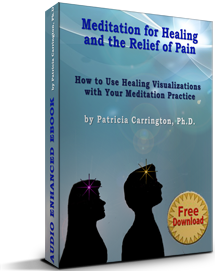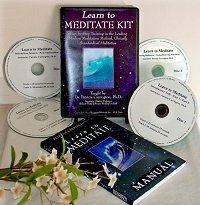Is Meditation a Unique State?
How Does Meditation Differ From Prayer?
, Ph.D.
Author of “The Book of Meditation”
The formal discipline of meditation originated in religious practice and the use of meditation as a spiritual exercise still outstrips by far its use as a practical technique in most parts of the world. The Hindu and Buddhist religions and that of the Sufi sect among the Moslems have developed meditation into a fine art, but other religious traditions through the ages have also developed their own highly effective meditative practices.
Some forms of Christian meditation, particularly those practiced in monasteries, are true ‘meditation’ in the sense in which we are using that word in this book. Other Christian practices loosely termed ‘meditation’ are, however, actually forms of ‘contemplation’. Rather than evoking the meditative mood, they create an atmosphere where thought is directed in a disciplined manner to a specific theological problem or religious event. This process often ends with an effort to apply the religious idea contemplated to one’s own life.
Much more commonly used by the religious lay person than meditation (at least in the West) is simple prayer, and the relationship of prayer to meditation is an elusive one. While profound prayer probably cannot take place without entering what we have called the meditative mood, mechanical repetition of standard prayers in order to fulfill religious obligations does not require this special mood at all.
Prayer is nevertheless closely related to meditation in many ways. It is usually an inward, contemplative state, undertaken in quiet, often in solitude. As in meditation, so in prayer outward stimuli are reduced and a special kind of soothing, monotonous environment is created. The echoing intonation of ritual words and phrases chanted over and over again; reverberating music; candlelight; votive offerings; incense; the sound of bells; awe-inspiring architecture with symbolic decorations; a special posture held for a period of time; the closing or partial closing of the eyes – these are all traditional accompaniments of prayer intended to evoke a sense of reverence and union with the deity. Through them the meditative mood is evoked in a highly effective manner.
There are some important differences between meditation and prayer, however, even when meditation is used for spiritual purposes. Although prayer relies upon the meditative mood, it is none the less a goal-directed activity. In prayer, a person calls upon a deity in some manner. They give praise or offer thanks; seek forgiveness, consolation or assistance; or enter into some other relationship with the deity. This goal-directed form of praying, by far the most common type, is quite different from the non-striving, relatively goal-less absorption of meditation.
As we turn to other forms of prayer, however, the distinction between them and meditation is not so clear. Prayer can be used as a genuine form of meditation in the sense in which we have been using this term. Psychiatrist Edward Maupin has described silent, contemplative prayer as having been for a long time the West’s only widely used, socially approved ‘form of meditation’. 1 He suggests that with the lessening of prayer in the West in recent years, we have lost a quiet contact with inner experience that is essential for the nourishment of the human spirit.
In some instances prayer is intentionally structured in a form belonging strictly to the realm of meditation. In Western monasteries, repetition of words in praise of God has been widely used to evoke a special state in which the outer world is shut out and the person is transported into an exalted sense of closeness with God. The ‘Prayer of the Heart’ used by Russian monks and devout lay people in pre-revolutionary Russia is an example of this. This prayer was used to ‘purify the intellect’ by means of a passive attitude and the repetition, on each successive out breath, of the phrase ‘Lord Jesus Christ, have mercy on me’. By this means the mind was thought to become emptied of all thoughts, images and passions. In this instance, a Christian religious phrase was being used in the same manner as mantras are used in India. Authentic Sanskrit mantras are either the names of deities or religious phrases.
Used as a form of silent inner communion, or coupled with a mantra-like repetition of religious words, prayer can be seen to blend imperceptibly into meditation. Although we cannot equate prayer and meditation, we cannot fully separate them either. The two states are closely related, not only historically, but often in their spirit or purpose, and both practices are in some sense related to another familiar method which evokes the meditative mood – that of self-hypnosis.
1. E. W. Maupin, ‘Meditation’, in Ways of Growth, ed. H. A. Otto and J. Mann (New York: Viking, 1968), pp. 189–98.
Dr. Patricia Carrington's award winning meditation technique CSM (Clinically Standardized Meditation) is a clinically sensitive meditation method developed by the Medical Department of New York Telephone Company and used by numerous medical institutions, organizations, and individuals worldwide. For information .



